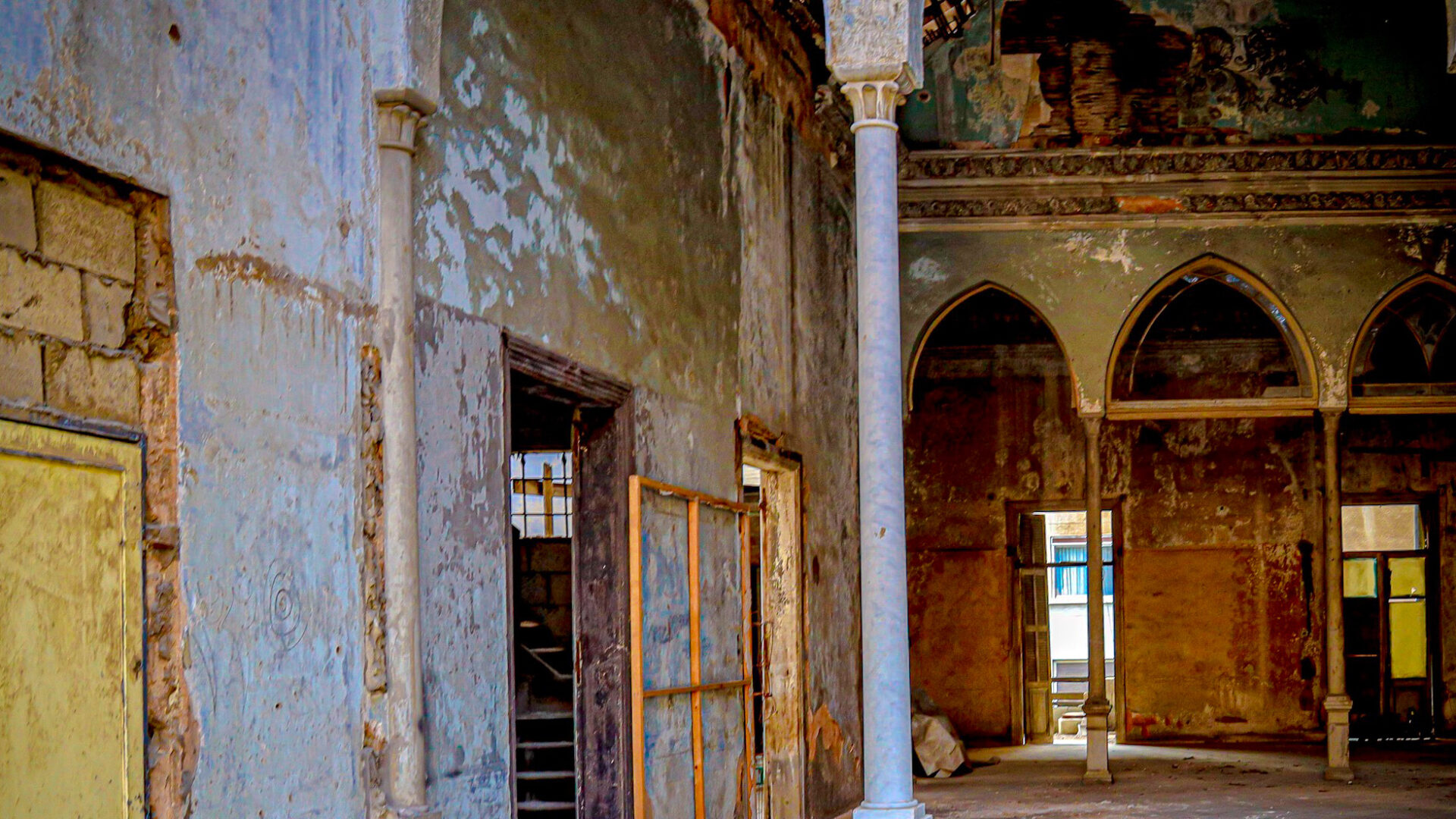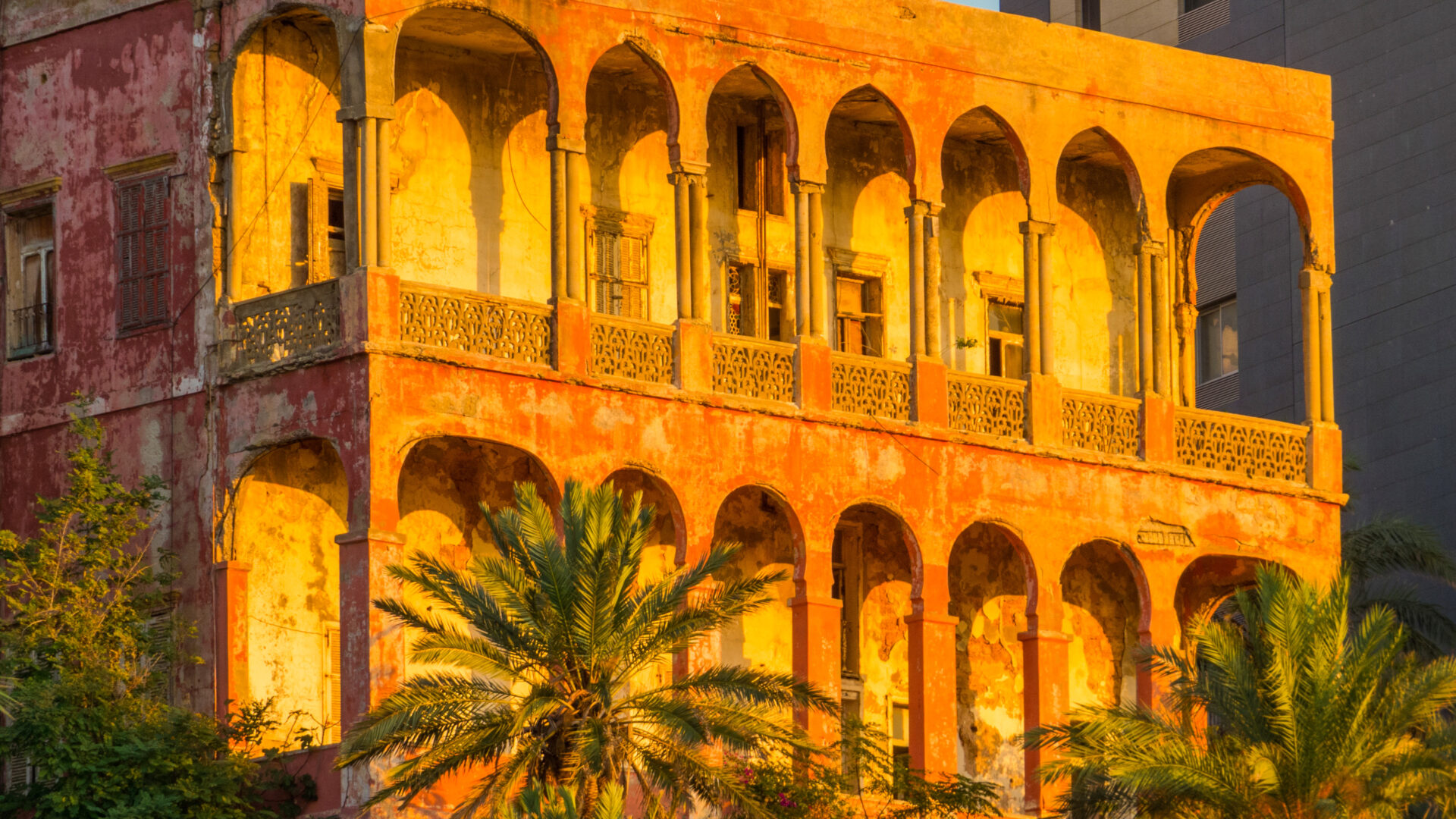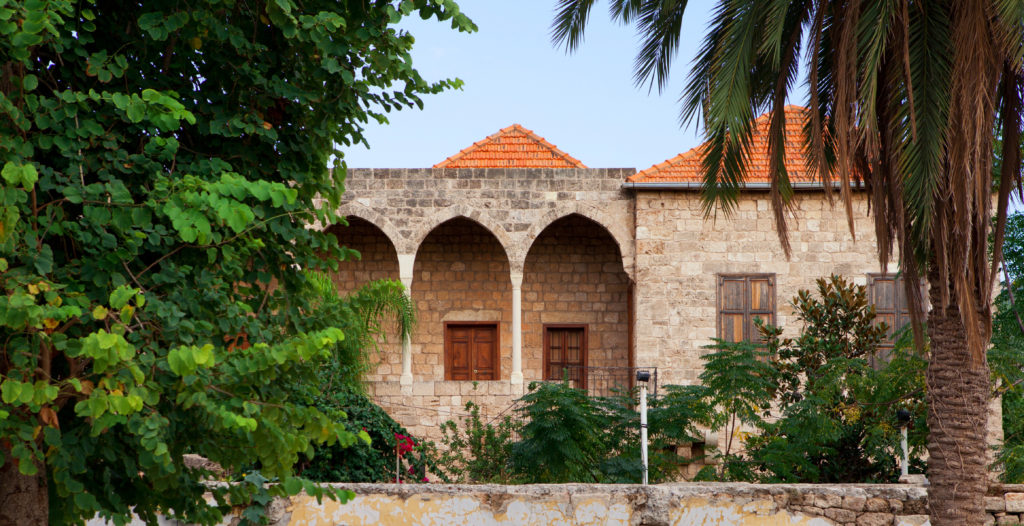Icons of ravishing beauty in the cities and in the countrysides
Found all over Lebanon, these resplendent traditional houses first flourished in the 19th-century Ottoman era. The central hall house became the archetypal home of Lebanese middle-class families. It is made up of a single block topped with a pyramidal red-tiled roof. These homes typically have very high ceilings designed to keep the rooms cool during Lebanon’s generous summers months. You may also find interior arcades throughout, adding softness to the rooms. On the outside, houses are dressed in stone, with an ocher coating or other similar shades, and feature the trademark three windows in the shape of arches that welcome a world of sunshine and light to its interior. Some of these characteristic homes are also accompanied by an elegant wrought-iron balcony and a delicate colonnade, inspired by the opulent Venetian palaces and Ottoman architecture. The signature red-tiled roof has no windows nor chimney stacks and is playfully referred to as the tarboush (fez) of the house.

At first glance, these heritage homes may seem all alike, but if you look closer you can discern their individual personalities and unique traits. In Byblos, you will commonly find spacious homes, divided by several floors (called harat), where the loggias, at times daringly coloured, may take on more rustic features like natural wood shutters and exposed beams. Along Jounieh Bay and in Batroun, they tend to be more modest in size, allowing them to blend into the landscape with ease. Or else you can spot them along the winding streets of Saïda’s vibrant souks and in most Lebanese mountain villages commonly surrounded by orchards. However, the most ornate types are usually seen in Beirut, where they have been transformed into oriental palaces inspired by eccentric baroque designs. Often adorned with Gothic or Moorish traces that can be seen in the woodwork, wrought iron, painted ceilings and walls, glazed windows, stucco and other carved columns; they reflect the flair and tastes of their past proprietors and tell the story of its glorious heyday. Sometimes, these architectural gems are shielded by a private garden in the heart of the city, as commonly found in the area of
At L’Hôte Libanais, we attach great importance to the preservation of Lebanese architecture; thus most guesthouses that are part of our Family are traditional houses in Beirut and in Lebanon’s rural regions.
The epicenter of hospitality
Typically, as seen among the older homes, the main social area is the courtyard. Otherwise, it is the large reception room adorned with the mythical three arched windows. The other rooms, which are also generous in size, are adjacent to this central hall of the home to facilitate family gatherings. Impossible to get lost, you will never find long corridors, or an enfilade of doors, as no room is meant to be isolated. The Lebanese house is designed so that people converge to its center where the spectacle of oriental hospitality is played out. No doubt, patrons of tradition still appreciate this architecture that encouraged a lifestyle centered on conviviality, hospitality and social gatherings, while protecting the family within its robust stone walls.
A heritage in peril
Unfortunately, this jewel of Lebanese heritage is in danger. These beautiful storied residences, which blend so well in the landscape and give Lebanon its unique character, have been steadily disappearing. Sadly, they are losing the battle against mass urbanization and are being taken down to give way for bland affordable housing. Their restoration is very expensive, which means families have no choice but to abandon them in ruins or to sell them, only to be replaced by multi-story concrete buildings.

As a result, the symbols of the heart and soul of Beirut’s central districts continue to be ravaged in favor of soulless modernity. Furthermore, the present legislation does not favor the conservation of heritage houses. The law, dating from 1933, is virtually ineffective as it protects only constructions that are prior to the seventeenth century. Demolition applications are handled on a case-by-case basis by the Ministry of Culture and most prohibitions to demolish are often circumvented. The growing need for new properties, especially in densely populated areas, means the real estate developers are the ones who most often succeed.
In fact, a proposal for a law on the preservation of architectural heritage was adopted by the Council of Ministers on October 12, 2017, but ironically it has since slumbered in the Chamber of Deputies.
However, it is still possible to admire the precious heritage homes immaculately renovated in many parts of Lebanon. One example is a remarkable project executed by AKK Architects that fully restored a traditional building from 1870 into a functional contemporary family home. Otherwise, you can admire many other homes still standing untouched, as romantic ruins, when crossing a turn at a mountain village or walking in the heart of the capital.
“The Pink House” or better known as “La Maison Rose”, located in Ras Beirut, demonstrates that it is still possible to reconcile modernity and tradition. Once doomed to ruins, visitors and residents of Beirut have been moved to see this magnificent traditional house resurrected to its original glory. Transformed for a time into an exhibition center by artist Tom Young in 2015, its new owner Hicham Jaroudi has embarked on a renovation project that will aim to showcase heritage preservation and cultural life by dedicating part of the building to become a museum or art gallery.
Today, there are numerous organizations and individuals devoted to heritage preservation, who are fighting tooth and nail to protect these remaining homes from being demolished. Let’s hope more can be done to keep these architectural treasures alive.

